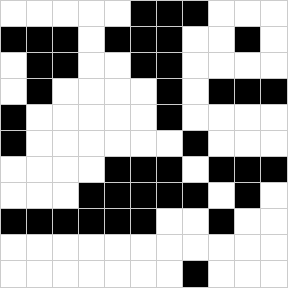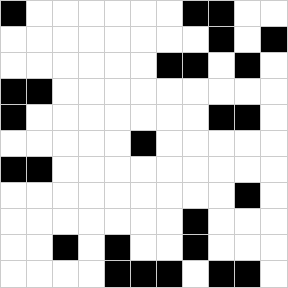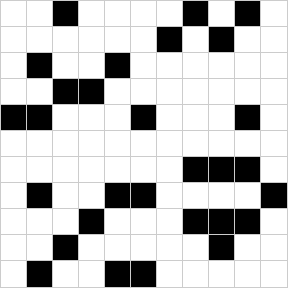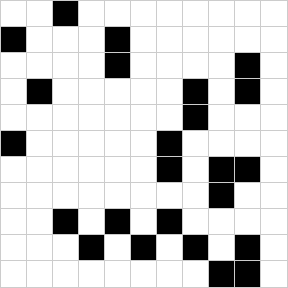Winter 2012
MATH 226: Limits and infinite series
Branko Ćurgus
- Wednesday, March 7, 2012
-
-
Here is a list of topics for the final exam.
- Monday, March 5, 2012
-
- Thursday, February 23, 2012
-
- Friday, February 17, 2012
-
- Thursday, February 16, 2012
-
-
This is what I expect that you should internalize from this week material:
-
Zorich's formulation of the Completeness Axiom,
-
the standard formulation of the Completeness Axiom with all the definitions that are essential for its understanding, see
Axioms for the Real Numbers.
-
the proof of the monotone convergence theorem as given in the notes.
- Tuesday, February 14, 2012
-
-
This is an extended version of
Axioms for the Real Numbers. In this file I prove that our version of the Completeness Axiom (which is in fact taken from the book Mathematical analysis by Vladimir Zorich, translated by Roger Cooke, published by Springer in 2004) is equivalent to the standard Completeness Axiom. As I mentioned in class, I prefer Zorich's version of the Completeness Axiom since it is stated using only the concepts introduced in preceding axioms. Moreover there is some symmetry in this axiom which is lacking in the standard version.
-
There is an inaccuracy in the assignment that I handed out.
Here is a corrected version of Assignment 3.
- Thursday, February 9, 2012
-
- Monday, January 30, 2012
-
- Thursday, January 26, 2012
-
-
The Mathematica file in the item below contains functions that are related to the functions on the
Assignment 2.
-
Here is a Mathematica file in which I show how to explore functions in Mathematica. The file is called PlottingFunctions.nb. Right-click on the underlined word "Here"; in the pop-up menu that appears, your browser will offer you to save the file in your directory. Make sure that you save it with the exactly same name.
-
After saving the file you can open it with Mathematica. For this file use Mathematica 5.2. (We also have Mathematica 8 in BH 215. Ignore it for now.) You will find Mathematica 5.2 in most Windows computer labs on campus; click here for a list of labs with Mathematica installed (select Mathematica from the long list of programs and click search). To locate Mathematica on a particular computer you might try
Start -> All Programs -> Math Applications -> Mathematica.
Open Mathematica first; then open PlottingFunctions.nb from Mathematica. You can execute the entire file by the following manu sequence (in Mathematica):
Kernel -> Evaluation -> Evaluate Notebook.
There are some more instructions in the file.
-
To get started with Mathematica 5.2 see my
Mathematica page.
- Monday, January 23, 2012
-
-
Here I summarize steps involved in limit proofs for
 = L.) .
.
- Thursday, January 12, 2012
-
-
Here I summarize steps involved in limit proofs for
 = L.) .
.
- Monday, January 9, 2012
-
- Today we discussed the concept of a constant function.
- This is the definition that we gave in class: Let $A$ and $B$ be nonempty sets. A function $f: A \to B$ is a constant function if there exists $c \in B$ such that $f(x) = c$ for all $x \in A.$
- The negation of this definition is: Let $A$ and $B$ be nonempty sets. A function $f: A \to B$ is not a constant function if for every $c \in B$ there exists $x \in A$ such that $f(x) \neq c.$
- It is interesting to point out that the definition of a
constant function given on Wikipedia is slightly different: A function $f: A \to B$ is a constant function if for all $x, y \in A$ we have $f(x) = f(y).$
- The negation of the Wikipedia definition is: Let $A$ and $B$ be nonempty sets. A function $f: A \to B$ is not a constant function if there exist $x$ and $y$ in $A$ such that $f(x) \neq f(y).$
-
It is not difficult to prove that two definitions are equivalent. However, Wikipedia's definition is simpler.
- We also discussed the concept of an eventually constant function.
- This definition is along the lines of Wikipedia's definition of a constant function: Let ${\mathbb R}_+$ denote the set of all positive real numbers. A function $f: {\mathbb R}_+ \to {\mathbb R}$ is eventually constant if there exists $X \in {\mathbb R}_+$ such that $f(x) = f(y)$ for all $x$ and $y$ such that $x >X$ and $y > X$.
- The negation of this definition is: A function $f: A \to B$ is not eventually constant if for every $X \in {\mathbb R}_+$ there exists $x$ and $y$ such that $x >X$ and $y > X$ and $f(x) \neq f(y).$
- The following item might help you in understanding mathematical statements involving quantifiers "for every" and "there exist" and negations of such statements.
- Consider grids which consist of black and white cells. For example consider the following four grids:
| Grid 1 |
Grid 2 |
Grid 3 |
Grid 4 |
 |
 |
 |
 |
Further, consider the following four statements:
-
In every row there exists a black cell. (Statement 1)
-
There exists a column such that all its cells are white. (Statement 2)
-
There exists a row such that all its cells are white. (Statement 3)
-
In every column there exists a black cell. (Statement 4)
For each grid identify statements that are true for that grid. For each grid identify statements that are false for that grid. State the negations of each of the statements 1 through 4.
- Tuesday, January 3, 2012
-
.
.



